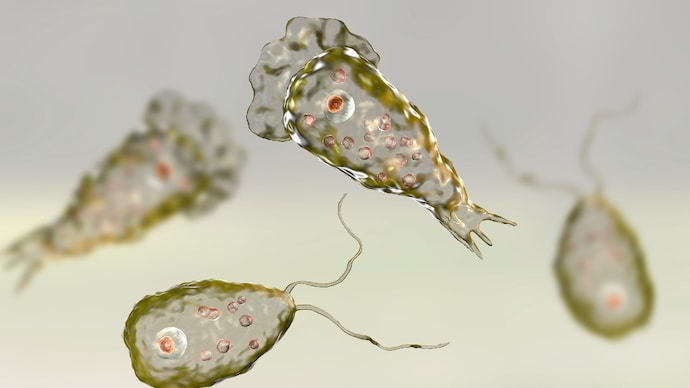Two new cases of brain-eating amoeba in Kerala: How does it spread so aggressively?
Recent cases of brain-eating amoeba in India highlight the deadly nature of this pathogen, which thrives in warm freshwater and causes fatal brain infections.

in short
- The brain-eating amoeba is called Naegleria fowleri.
- This fatal brain infection causes amoebic meningoencephalitis (PAM).
- The mortality rate for PAM is very high, with more than 97% of reported cases being fatal.
There are several cases of amoeba eating the brain, a rare but deadly pathogen that causes a fatal brain infection called primary amebic meningoencephalitis (PAM).
This microorganism thrives in warm freshwater, such as lakes, rivers, and hot springs. When contaminated water is inhaled, it can enter the body through the nose. The amoeba then moves into the brain, where it destroys brain tissue.
Why is this amoeba deadly?
What makes this amoeba particularly dangerous is its fast and aggressive nature. Once it infects the brain, symptoms may appear within 1 to 9 days, starting with headache, fever, nausea, and vomiting, rapidly progressing to confusion, seizures, and coma.
The mortality rate for PAM is very high, with over 97% of reported cases being fatal. In India, such cases are extremely rare but require attention due to the severity of the infection.
In Kerala, the warm climate and freshwater sources provide an ideal environment for the amoeba to thrive, especially during the monsoon season when the water is stagnant.
Dr Vishya Pillai, consultant physician at Meditrina Hospital in Palakkad, Kerala, had earlier told IndiaToday.in that Naegleria earned its name as the ‘brain-eating amoeba’ due to its high affinity for the brain and the subsequent rapid damage it causes.
Symptoms include fever, nausea, vomiting, headache and stiff neck. But as the infection progresses, patients may experience confusion, altered behavior, seizures, and eventually coma and death.
Awareness of the risk of Naegleria fowleri infection is important, as preventive measures can save lives.
Health experts recommend avoiding swimming or diving in hot fresh water, especially after rain, and using clean, filtered water for nasal irrigation.
Early diagnosis is important, but due to its rapid progression and non-specific symptoms, PAM is often diagnosed too late, making awareness and prevention the best defense against this deadly pathogen.